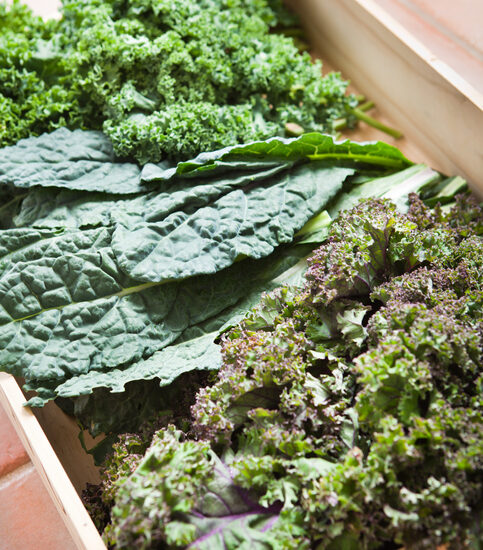The Truth about Kale

Be honest. When you think of healthy food, do images of kale flash before your eyes? I must admit, I often use it as an example in my conversations about healthy eating: “Don’t worry”, I say, “I’m not asking you to give up all of your favorite foods in exchange for kale, chia seeds, and tofu”.
Yes, kale is undoubtedly good for you, but it’s also misunderstood to be a flavorless, boring, force-yourself-to-eat it type of green. Nothing could be further from the truth!
Here’s what you need to know about this deliciously versatile green.
Kale Three Ways:
Kale is a member of the cabbage family and is considered a cruciferous vegetable—a class of vegetable named after the “cross-bearing” shape of its flowers. Cruciferous vegetables are rich in cancer-fighting compounds called glucosinolates. When eaten regularly, they can aid in: weight management, healthy blood sugar, and balanced hormones.
There are several types of kale, each with its own unique qualities that make it ideal for certain applications.
Curly kale:
Curly kale is bright green with tightly ruffled leaves and a bitter, yet peppery flavor. It’s fantastic sautéed in olive oil with a touch of garlic, roasted alongside other vegetables, or as kale chips. If you plan on eating it raw in salads, you’ll want to gently massage it with a bit of sea salt and lemon juice to soften it up.
Instead of potato chips, give this Perfect Kale Chip recipe a try!
Lacinato (dinosaur) kale:
Lacinato kale is dark green with a pebbled appearance similar to dinosaur skin. The texture is firm and pleasantly chewy, and the flavor is deep, earthly, slightly nutty and less bitter than curly kale. This hearty kale retains its firm texture even after cooking, which is why it’s my favorite by far! Lacinato kale is super versatile and can be used in salads, slaws, soups, and lightly sautéed and mixed in grain or bean-based dishes. Check out this week’s feature recipe for Kale & White Bean Skillet.
Red kale:
Red kale is similar to curly kale, but with flatter leaves and purplish-red stems. It’s a bit sweeter than curly kale and also cooks more quickly. It’s delicious sautéed in garlic and olive oil with a pinch of sea salt and finished with lemon juice. Red kale also works well in smoothies and salads. Try this simple kale salad for your next meal.
Food for thought …
The center rib of kale, although edible, is fibrous and tough to eat. When preparing a kale salad or side dish, cut out the center rib, chop into bite-size pieces, and use it for cooking with soups or sauces.


